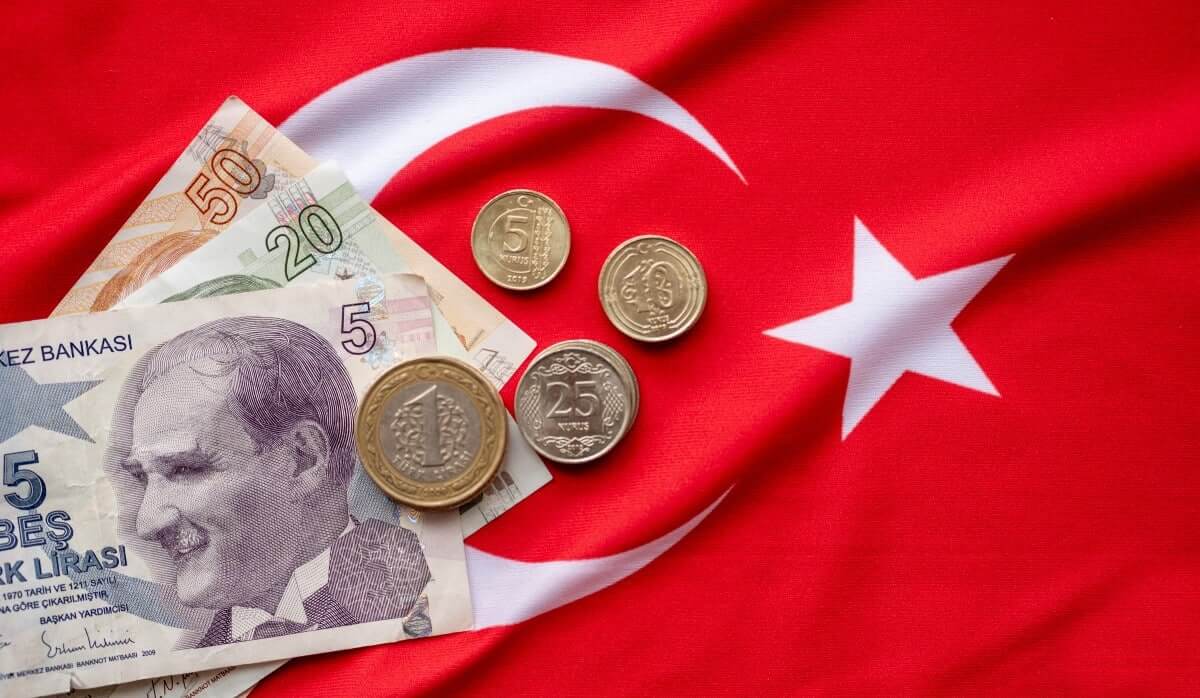
The U.S. dollar rebounded while the Turkish Lira continued falling
The U.S. dollar climbed higher on Friday. Despite that, it remained on track for its biggest weekly drop in almost four months. Investors significantly lowered Federal Reserve rate hike expectations. There were signs that the U.S. central bank might slow or even pause its tightening cycle in the second half of 2022.
Investors also contemplated a broad-based fall in U.S. Treasury yields, along with weak economic data and cautious comments by some Fed policymakers, including Atlanta Fed President Raphael Bostic, this week. All of these have raised the prospect that the greenback’s gains premised on aggressive rate increases may have halted for now.
ING strategists noted that the forex market’s tentative speculation about a pause in the Federal Reserve’s tightening cycle in September is also contributing to keeping the U.S. dollar soft.
On Friday, the dollar index plummeted as low as 101.43 against a basket of six other major currencies for the first time since April 25. On a weekly basis, it has shaved off 1.3%, experiencing its biggest weekly decline since the first week of February.
The greenback had hit an almost two-decade high above 105 earlier this month. However, it has retreated since then, along with the weakening of economic data. A Citigroup economic surprise index for the United States has dropped to its lowest level since September 2021. However, some analysts were cautious about calling for a deeper plunge in the greenback with global markets still on edge.
Kenneth Broux, an FX strategist at Societe Generale in London, stated that month-end portfolio rebalancing would likely give the dollar a boost. So, he expects some losses to ebb. In addition, suspense is high for ISM and payrolls next week after the new homes sales data came negative this week.
What did the Fed’s meeting show?
Minutes from the agency’s May meeting this week showed most participants believed 50 basis-point increases would be appropriate at the June and July policy meetings. However, many thought big, early hikes would allow room to pause later in 2022 to assess the effects of that policy tightening.
Meanwhile, the euro became the chief beneficiary of the dollar’s decline. But its momentum has also stalled as traders believe a lot of the expected rate increases from the European Central Bank are already baked into current levels.
Against the U.S. dollar, the common currency soared briefly to its highest levels in a month at $1.0765 on Friday. At the same time, the Sterling remained firm at $1.2666. The risk-sensitive Australian dollar also jumped by 0.6% to $0.7142, while the New Zealand dollar added 0.65% to $0.6520.
In Asia, the Turkish Lira seemed set for its sixth consecutive weekly loss on Friday. However, Hong Kong stocks rallied as investors found comfort in signs of improving Sino-U.S. relations, as well as expectations that Beijing will implement further measures to boost economic growth. Technology stocks gained the most, leading Hong Kong’s Hang Seng index higher. China’s blue-chip CSI300 index surged forward by 0.2% after the U.S. Secretary of State announced that Washington wouldn’t block Beijing from growing its economy. It still wants China to adhere to international rules, though.
How are the EM currencies faring?
Emerging market currencies edged up by 0.4% on Friday. They were still on track for their fifth straight monthly decrease, though. Cristian Maggio, the head of emerging markets strategy at TD Securities, noted that risk appetite has improved in the market. It’s a good sign that things seem to be reversing a bit after months of negative sentiment.
Despite that, Turkey’s Lira tumbled down today. It was poised for its sixth consecutive weekly loss after the central bank stated that it would hold key rates at 14% amid stubborn inflation. According to Maggio, the Turkish currency has been in a tailspin for some time now. The central bank had a rate announcement yesterday, and it did nothing despite inflation being at 70%. The country is very imbalanced at the moment from a macro-financial point of view, and the Lira reflects that.
The Hungarian forint added 0.1% on Friday in central Europe but remained set to end the week lower. Hungary’s Budapest SE Index also extended losses. It was on course for its worst weekly performance in almost three months as traders awaited details of new windfall taxes on banks and large private companies.


